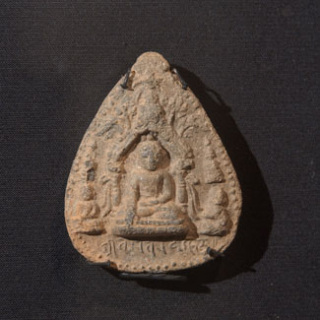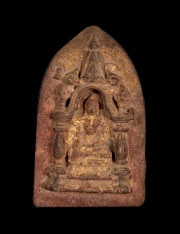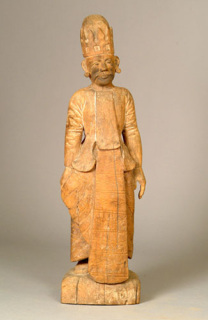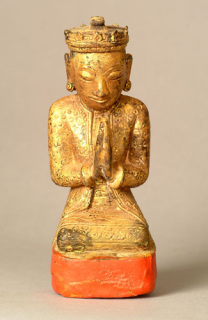Donors and Religious Practice
|
One of the central tenets of Buddhism is generosity. By making offerings to the Buddha and the monkhood, people improved their karma in the hopes of being reborn in a better existence. All religious art generated merit, and therefore improved karma, for the donors, the artists, and the viewers. People in Burma gave as much as they could afford in an effort to guarantee future happiness. Kings, ministers, and other wealthy individuals generated the most merit by paying for the construction and decoration of buildings, the production of art such as Buddha images and manuscripts, and the support of monks and monasteries. This support consisted of donations of cash, clothing, slaves, land, animals, buildings, material goods, and food. People with fewer financial resources would pay for less ostentatious items and make smaller donations. Groups of people sometimes combined their resources to make a joint, large donation; in this way greater merit would accrue to each of the contributing individuals than if they had made separate offerings.
Artistically, donor figures and offering vessels would have been used on altars to pay homage to the Buddha. Votive tablets reflect three significant aspects of religious practice: the creation of merit through the production of sacred imagery, the collection of souvenirs from Buddhist pilgrimage sites, and the incorporation of the tablets into buildings to enhance the sanctity of the edifice. The production and viewing of Buddha images, narratives of the Buddha’s lives, and other religious objects would also have improved Buddhists’ karmas. |

























